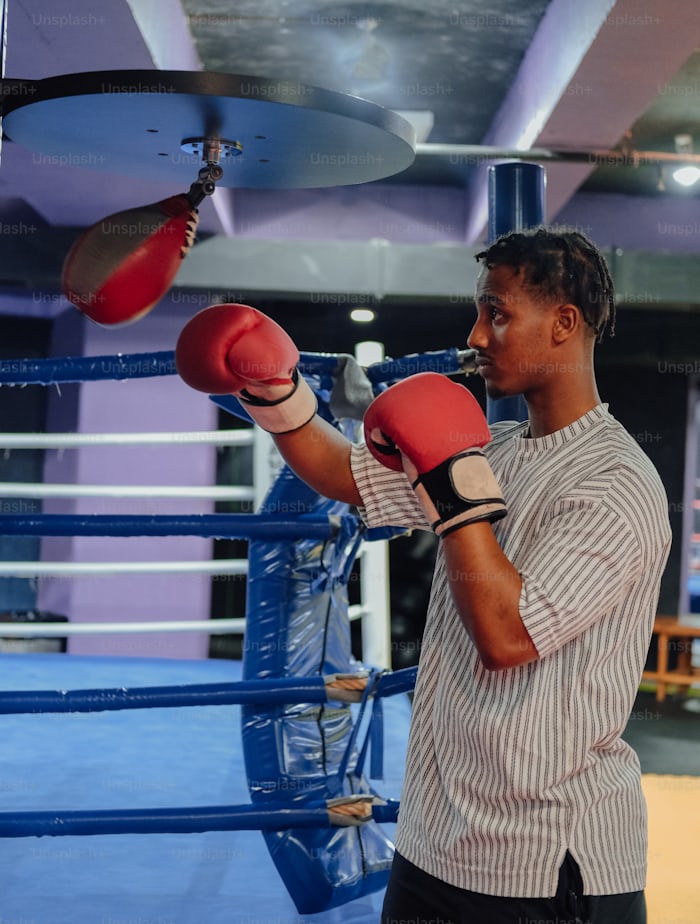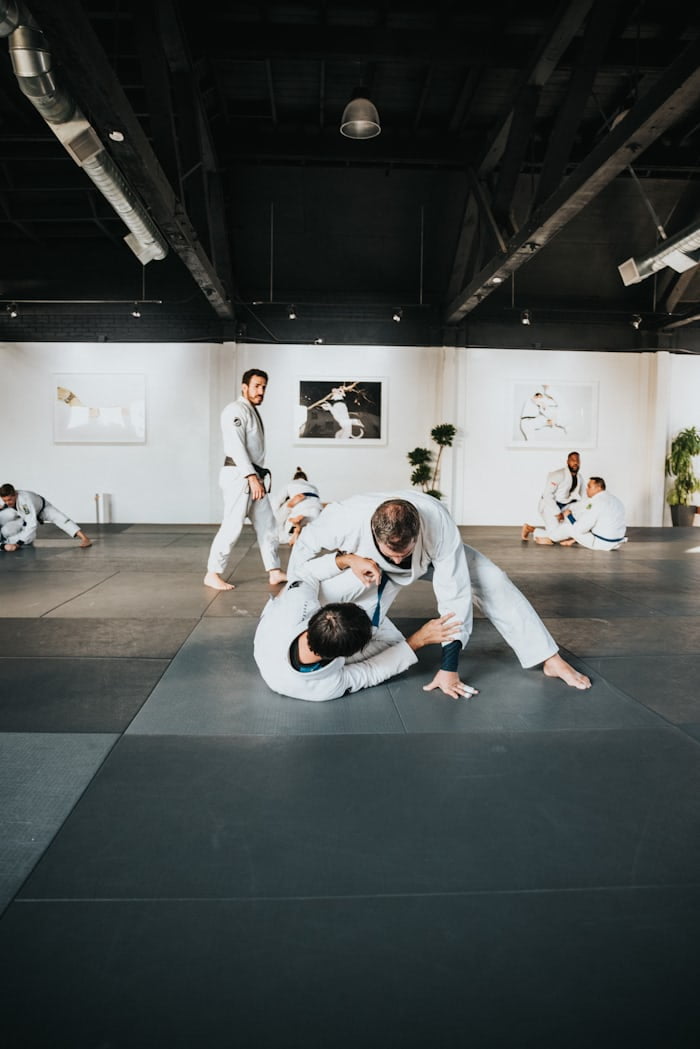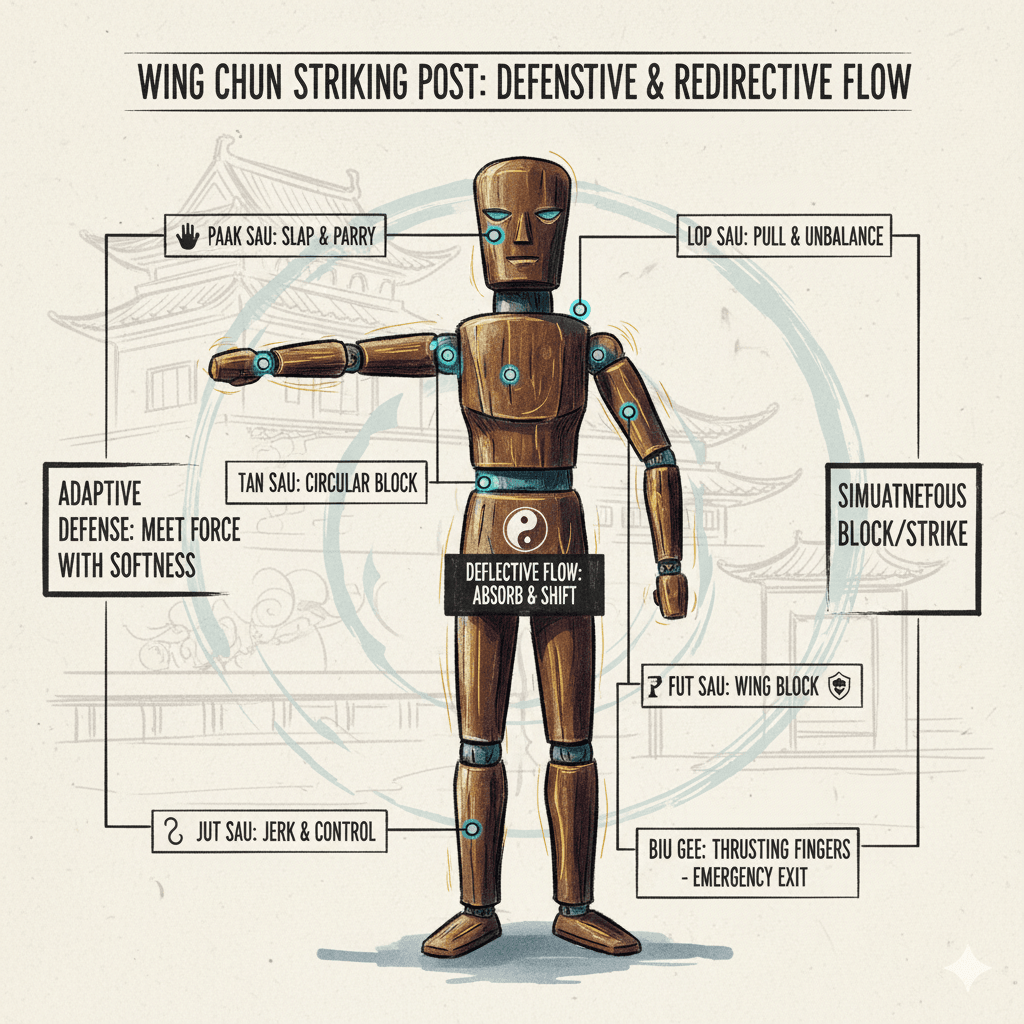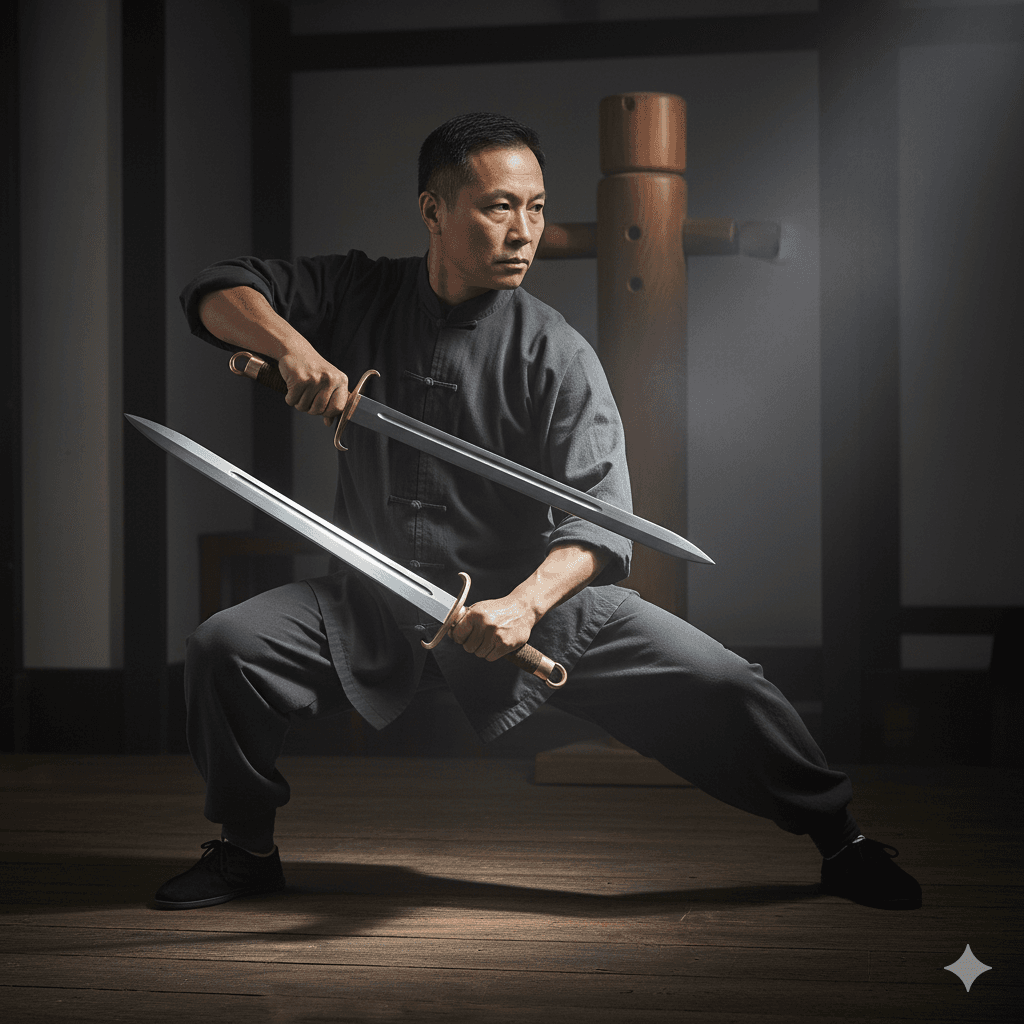Martial arts, a term encompassing a variety of combat practices, have a storied history stretching back thousands of years.
Originating in different parts of the world, martial arts were primarily developed for self-defense, military training, and physical conditioning.
Styles such as Karate, originating from Okinawa, Japan, and Kung Fu from China, carry rich cultural traditions that have been passed down through generations.
Each martial art style has its unique techniques, philosophies, and training methods, reflecting the cultural and historical contexts from which they emerged.
Over time, martial arts have transcended their origins to become popular sports and recreational activities globally.
The rise in popularity can be attributed to several factors, including the spread of Eastern philosophies, increased interest in fitness and self-defense, and the influence of media and entertainment.
Movies and television shows featuring martial arts have played a significant role in popularizing these practices.
Iconic figures like Bruce Lee and Jackie Chan brought martial arts to international audiences.
showcasing not only the physical prowess required but also the mental discipline and strategic thinking involved.
In recent decades, martial arts have further cemented their place in mainstream culture through competitive sports.
Mixed Martial Arts (MMA), for example, has garnered substantial attention, blending techniques from various disciplines such as Brazilian Jiu-Jitsu, Muay Thai, and wrestling.
The popularity of MMA organizations like the Ultimate Fighting Championship (UFC) has spotlighted the effectiveness and versatility of martial arts in combat situations.
Beyond entertainment and sport, martial arts serve as a practical means of self-defense.
Many individuals take up martial arts training to enhance their ability to protect themselves in potentially dangerous situations.
The rigorous training routines, which often include sparring and scenario-based drills, aim to prepare practitioners for real-world confrontations.
As a result, martial arts are not only celebrated for their cultural heritage and entertainment value but also for their practical applications in personal safety and self-defense.
The Purpose of Martial Arts Training

Martial arts training encompasses a range of objectives that extend beyond mere physical combat skills.
One of the primary goals of martial arts is the cultivation of discipline.
Through rigorous training regimens and adherence to a structured practice schedule.
practitioners learn the importance of self-control, respect, and perseverance.
This discipline is not limited to the dojo but permeates all aspects of a martial artist’s life, fostering a sense of responsibility and ethical conduct.
Physical fitness is another critical component of martial arts training.
Regular practice involves a combination of cardiovascular exercises, strength training, flexibility routines, and technique drills.
These activities not only enhance overall physical health but also improve coordination, balance, and agility.
Martial artists often find themselves in peak physical condition, which is beneficial for both health and self-defense capabilities.
Self-defense is often cited as a key reason individuals pursue martial arts.
Training equips practitioners with techniques to protect themselves and others in potentially dangerous situations.
However, it is important to note that martial arts schools typically emphasize controlled environments where techniques are practiced safely and with mutual respect among students.
This controlled setting can be vastly different from the unpredictability of real street fights, where variables such as multiple attackers, weapons, and chaotic surroundings come into play.
Mental well-being is also a significant aspect of martial arts training.
The practice encourages mindfulness, focus, and emotional regulation.
Techniques such as meditation and controlled breathing are often integrated into training sessions,l.
helping practitioners manage stress and develop mental resilience.
This holistic approach ensures that martial artists are not only physically capable but also mentally prepared to handle various challenges.
In conclusion, the purpose of martial arts training is multifaceted, aiming to develop discipline.
enhance physical fitness, provide self-defense skills, and promote mental well-being.
While these aspects are invaluable, it is crucial to recognize that the structured and controlled nature of martial arts training may not fully replicate the complexities of real street confrontations.
Controlled Environments vs. Unpredictable Street Fights
Martial arts training typically occurs in controlled environments such as dojos or gyms, where the primary focus is on technique, discipline, and respect for the art.
These settings provide a structured framework that includes safety protocols, experienced instructors, and a supportive community.
Practitioners train under predetermined rules that restrict certain actions to minimize the risk of injury.
Such an environment fosters learning and mastery of specific skills, allowing students to progress through various levels of proficiency in a predictable manner.
However, the highly regulated nature of martial arts training can create a significant gap when it comes to real-world application.
In a dojo, practitioners know what to expect: they are aware of their opponent’s skill level, the types of techniques that will be employed, and the boundaries within which they must operate.
This contrasts starkly with the chaotic nature of street fights, where unpredictability is the only constant.
In an actual altercation, there are no rules, no referees, and no guaranteed safety.
The environment is uncontrolled, and the potential for multiple attackers, weapons, or other unforeseen variables is high.
Moreover, the psychological aspect of street fights cannot be overlooked.
The stress and adrenaline rush in a real-life confrontation are significantly different from the controlled aggression experienced during training.
Martial artists may find it challenging to maintain composure and effectively apply their skills when faced with the genuine threat of harm.
The absence of a controlled setting means that decisions must be made instantaneously, often with limited information and under duress.
While martial arts provide valuable techniques and strategies.
their effectiveness in street fights depends largely on the practitioner’s ability to adapt to the unpredictable and often brutal realities of such encounters.
Understanding this distinction is crucial for anyone looking to utilize martial arts for self-defense.
Limitations of Traditional Martial Arts Techniques
Traditional martial arts techniques, often revered for their discipline and historical significance, can exhibit several limitations when applied to real street fights.
One critical issue is the inefficacy of certain moves that, while impressive in a controlled dojo environment, may fall short in high-stress, unpredictable street scenarios.
Techniques that involve elaborate sequences or require significant setup time can become liabilities when quick, instinctive reactions are paramount.
Moreover, the impracticality of some stances used in traditional martial arts becomes evident in the chaotic nature of street confrontations.
Stances designed for stability and balance in a sparring ring may not translate well to uneven, slippery, or obstructed surfaces found in real-world settings.
For instance, deep stances that lower the center of gravity might hinder mobility, making it difficult to evade or counter an attack swiftly.

Another significant concern is the potential danger of relying on techniques that demand high precision under duress.
In a street fight, the adrenaline surge and heightened stress levels can impair fine motor skills, rendering precise strikes and complex grappling maneuvers less effective.
Techniques that necessitate pinpoint accuracy can become unreliable, potentially putting the practitioner at greater risk.
Furthermore, traditional martial arts often emphasize a set of rules and honor codes, which can be a disadvantage in street fights where such principles are absent.
Real-life confrontations frequently involve unexpected variables such as multiple attackers, weapons, and unprovoked aggression, elements that are typically not addressed in traditional martial arts training.
This gap can leave practitioners unprepared for the brutal and unpredictable nature of street violence.
In summary, while traditional martial arts provide valuable skills and a strong foundation of discipline, their techniques may face significant limitations in real street fights.
Practitioners should be aware of these constraints and consider supplementing their training with more practical, adaptive combat strategies to enhance their overall effectiveness in unpredictable and dangerous situations.
The Role of Size, Strength, and Speed in Street Fights
In the context of street fights, physical attributes such as size, strength, and speed often play a pivotal role in determining the outcome.
Unlike controlled environments of martial arts dojos or competition arenas, street fights are unpredictable and chaotic.
Here, raw physical power can sometimes overshadow the technical skills that martial artists spend years honing.
First and foremost, size can be a significant advantage.
Larger individuals often have a longer reach and greater mass, which can translate into more powerful strikes and a better ability to absorb blows.
In situations where grappling becomes inevitable.
a larger person may find it easier to overpower a smaller opponent, regardless of the latter’s technical prowess.
Strength is another crucial factor. While martial arts techniques are designed to leverage efficiency and precision.
the brute force of a stronger individual can break through defenses and destabilize an opponent.
This is particularly evident in scenarios where close-quarters combat prevails, and sheer muscle power can make a difference in clinches and grapples.
Speed, often underestimated in street fight scenarios, can be a game-changer.
Fast reflexes and quick movements can enable an individual to evade attacks and counter with precision.
Even without formal training, a person with superior speed can exploit openings and deliver strikes before the opponent has time to react.
However, it is important to note that while size, strength, and speed are significant, they are not the sole determinants of a street fight’s outcome.
A well-rounded martial artist who can adapt to the chaotic nature of street fights and effectively utilize their skills, alongside their physical attributes, stands a better chance.
Nonetheless, in many real-world encounters, these physical factors can indeed overshadow technical skills, underlining the multifaceted nature of street combat.
Psychological Factors in Real Fights
Street fights present a chaotic environment where psychological factors significantly impact the outcome.
Fear, adrenaline, and stress are paramount among these factors.
In a controlled martial arts setting.
practitioners train in a structured environment where they can anticipate their opponent’s moves.
However, during a real street fight, unpredictability can induce fear, leading to a fight-or-flight response.
This sudden surge of adrenaline can either enhance physical capabilities or cause a detrimental freeze reaction, paralyzing the individual.
The body’s physiological response to stress is another critical factor.
Elevated heart rate, rapid breathing, and muscle tension can impair fine motor skills.
making it challenging to execute precise techniques learned in martial arts training.
Even experienced martial artists may find it difficult to perform under such conditions.
This is where the concept of mental toughness becomes crucial.
Mental toughness refers to the ability to remain calm and focused under pressure.

enabling one to think clearly and act decisively.
Developing this trait often requires rigorous mental conditioning.
which is just as important as physical training.
Situational awareness is another vital component in real street fights.
Being aware of one’s surroundings and potential threats can provide a significant advantage.
Martial artists are trained to read their opponent’s body language and anticipate movements.
but in a street fight, multiple variables must be considered.
such as the environment, bystanders, and potential weapons.
Enhancing situational awareness can help martial artists make quick, informed decisions.
potentially avoiding conflict altogether or finding the most effective way to neutralize a threat.
In summary, while martial arts training provides valuable skills, the psychological factors in street fights add a layer of complexity that cannot be overlooked.
Fear, adrenaline, and stress can impair even the most skilled martial artist’s ability to execute techniques effectively.
Therefore, mental toughness and situational awareness are indispensable in navigating the unpredictable nature of real street fights.
Case Studies and Real-World Examples
When evaluating the effectiveness of martial arts in real street fights.
it is essential to consider various case studies and real-world examples.
These instances provide insight into the practical application of martial arts techniques and their success or failure in uncontrolled environments.
One notable example is the use of Brazilian Jiu-Jitsu (BJJ) by Royce Gracie during the early Ultimate Fighting Championship (UFC) tournaments.
Gracie’s success in defeating larger and stronger opponents demonstrated the effectiveness of BJJ techniques in neutralizing threats.
particularly in one-on-one confrontations.
His victories highlighted the importance of ground-fighting skills and leverage.
which are crucial in street fights where size and strength disparities are common.
Conversely, there have been instances where traditional martial arts have fallen short in real-world scenarios.
For example, a widely circulated video from 2016 shows a traditional Kung Fu master being swiftly defeated by a mixed martial artist in a street fight.
This incident sparked a debate about the practicality of traditional techniques in unpredictable, high-stress situations.
Critics argue that some traditional martial arts, while rich in cultural and historical value.
may lack the adaptability required for modern self-defense.
Another real-world example involves the use of Krav Maga, a martial art known for its focus on practical self-defense.
In several documented cases, individuals trained in Krav Maga successfully defended themselves against multiple attackers.
using techniques designed to neutralize threats quickly and efficiently.
These instances underscore the importance of training in realistic scenarios and highlight the effectiveness of techniques tailored for street combat.
Overall, the effectiveness of martial arts in street fights varies depending on the specific art, the practitioner’s skill level.
and the situational context.
While some martial arts techniques have proven effective in real-world confrontations.
others may require adaptation to meet the demands of unpredictable street encounters.

These case studies emphasize the need for a balanced approach when assessing the capability of martial arts for self-defense.
Conclusion: Bridging the Gap Between Martial Arts and Street Self-Defense
In conclusion, understanding the effectiveness of martial arts in real street fights necessitates a critical approach that goes beyond mastering techniques within the controlled environment of a dojo or gym.
The unpredictable nature of real-world confrontations demands.
that martial artists adapt their training methodologies to bridge the gap between traditional martial arts and practical self-defense.
One vital aspect is cross-training in various disciplines.
By incorporating elements from different martial arts such as Brazilian Jiu-Jitsu, Muay Thai, and Krav Maga.
practitioners can develop a more comprehensive skill set that prepares them for a wide range of scenarios.
Each martial art offers unique strengths.
blending these can enhance one’s ability to respond effectively to unexpected situations.
Additionally, a strong emphasis on situational awareness is crucial.
Recognizing potential threats and understanding the environment can be as important as the physical techniques themselves.
Training should include scenarios that mimic real-life situations.
such as dealing with multiple attackers or managing confined spaces.
This approach fosters quick decision-making and adaptability under pressure.
Moreover, adopting a holistic approach to self-defense is essential.
This involves not only physical preparedness but also mental and emotional readiness.
Techniques such as stress inoculation training and scenario-based drills can help martial artists maintain composure.
and make sound decisions during high-stress encounters.
Mindfulness and psychological resilience are equally important in ensuring one is prepared for the unpredictable nature of street fights.
Ultimately, the goal is to create a well-rounded martial artist who is equipped to handle real-world confrontations effectively.
By integrating cross-training, situational awareness, and a holistic approach.
martial arts practitioners can significantly enhance their ability to protect themselves and others in real street fights.



